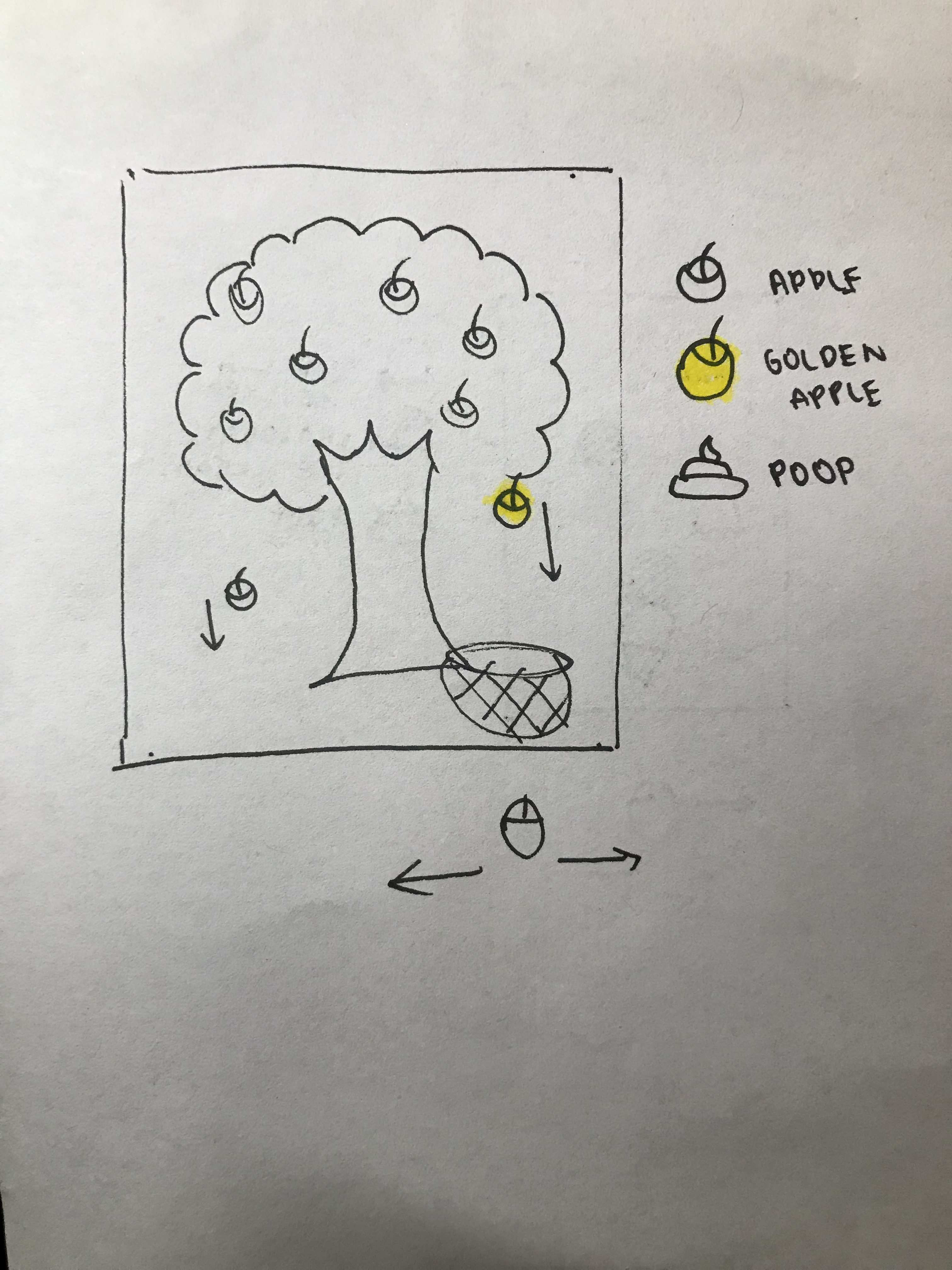For my final project, I want to create a game that has something to do with mouse interactions. I will be creating a tree that constantly has objects falling from it. The objects are apples, golden apples, and bird poop. The task of the users is to catch the apples with the basket through controlling the mouse x position. If the users catch a apple, they will get 1 point. If the users catch a bird poop, the game will end. If the users catch a golden apple, they will get a bonus life that will save them from losing the game if they catch a bird poop later on. The background would be a generative one that has birds flying around. The color of the day will change according the the time when the user is playing the game. I am still currently thinking of other things to add to the game, such as having a naughty kid that comes in every now and then who steals the apple, or speeding up the velocity of the falling apple over time.
Category: Section E
Christine Chen-Looking Outwards-12
Camille Utterback’s Glimpseand Theo Watson and Emily Gobeille’s work Living Libraryare two projects that interested me.
Utterback created Glimpsefor a collector’s foyer. It is an interactive multi-monitor piece that turns the entryway of the foyer into a dynamic experience for people who pass through. The visual shapes evolve according
to the people’s movement. The shapes that are created remain in the background, and the work continues to evolve as others come and go. What I admire most about this project is how it invites everyone to create one artwork, allowing people to somehow connect to each other. Another interesting thing about this work is how it turns the space into an interesting experience for people, adding some sparks into their daily lives as they pass through the foyer.
Above shows a video of Watson and Gobeille’s work Living Library, Source: https://vimeo.com/203193098
Like Glimpse, Watson and Gobeille’s work Living Library is also an interactive work. It works with the Connected World exhibition. The work utilizes two cameras and a laser light source projector. The cameras track the visitor’s hand’s positions, allowing them to trigger animations through motions. How the creators turn a book reading experience into a more interactive one fascinates me as now things that are limited by prints, such as sound and colors, are brought into life through animations.
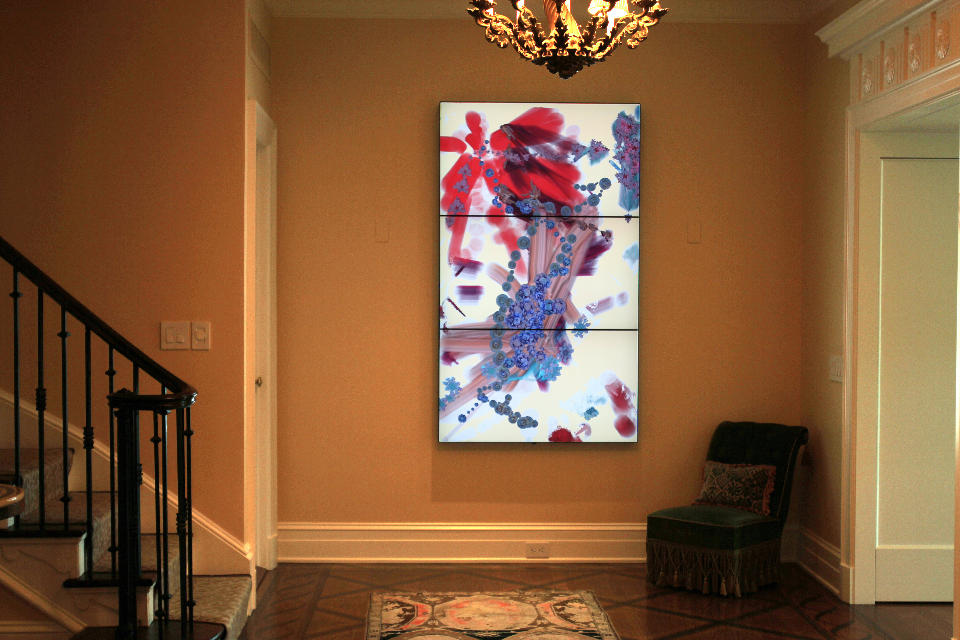
Both Glimpse and Living Libraryuses motions to control the created visuals. This is what I would like to explore in my project. Even though it would be quite hard for me to create something that senses the user’s motions as smoothly as they do in these projects, perhaps I could utilize the mouse’s motion instead.
JasonZhu-Proposal-12
Rudimentary video animation of our project.
Collaborator: Miranda Luong
My partner, Miranda Luong, and I plan on doing an audiovisual performance visualization for our final project. Interested in the dynamic capabilities of static design, our project will oscillate simple geometric shapes to visualize sound waves in music.
We were heavily inspired by Swiss Design, a time in design where strong geometry was utilized to create interplay between form and content. To break down our proposal for this project, our source audio will be represented by a singular circle placed in the midst of triangles and quadrilaterals. This circle will change in scale in accordance to the intensity of beats and the outside shapes will change as well. We imagined ripples, created by water droplets as an inspiration. We wanted our visual display to suggest a connection between the source audio and its environment. We will explore the communicative capabilities of flat imagery and test our own abilities to visually communicate music.
JasonZhu-LookingOutwards-12
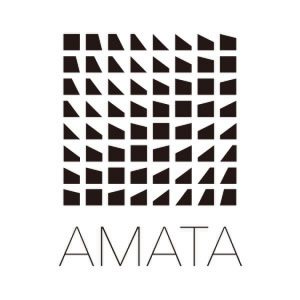
AMATA K.K. is a Japanese game development company centered in Tokyo, Japan. What I wanted to focus on was the logo for their company. A square composition constructed out of slightly variated quadrilaterals with a few triangles thrown into the mix, they use this logo as an opportunity to communicate their strong abilities in animation. Although the logo is merely a flat composition of simple shapes, the proximity of these shapes and their slight differences convey a sense of movement and depth. In relation to our project proposal, this is exactly what we hope to communicate through our own imagery. The difference is that we would be actually animating these shapes to generate a series of images that will visualize more than just one wave of movement but multiple, like that of music.


LEVEL is an audiovisual experiment by Paris-based design studio IF for Paris nightclub Machine du Moulin Rouge’s fifth-anniversary celebration. It utilizes light to “represent the dialogue between space and its limitations.” Set to the ambient tracks of Trespur, LEVEL projects a fast-paced series of dizzying distortions on a transparent material superimposed onto a semi-reflective surface. Each viewer in the room sees something different as lights shift and change from any given perspective in the room. I found this to be an inspiration for my own final project due to the very nature of the project, but especially for their one projection of ripples. In addition, after seeing all these other kinds of projections, perhaps I will try other kinds of movement besides radial.
Eunice Choe – Project-12-Proposal
For my final project, I want to mimic the effect of a book I read in elementary school called Zoom by Istvan Banyai. The book is composed of several landscapes that zoom out as each page is turned. As a result, the zoom outs continually cause shifts in perspective and allow readers to embark on a journey through several different landscapes and environments. With each zoom out, I plan to incorporate animations within each landscape that reflect the environment. For example, I will incorporate elements of gravity and physics to make the landscapes seem more realistic. I will also make my project interactive by allowing the user to click on a “zoom out” button that will show a new, zoomed out landscape. I also plan to incorporate elements of randomness in the landscapes so that the users will have a different experience every time they interact with the project. While I am unsure of how many frames I will incorporate, I hope to create the same effect the book gives off with each zoom out.
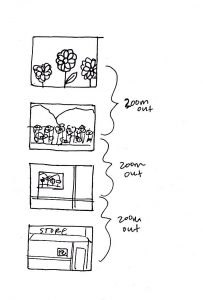
Inspiration (pages of Zoom):
Jenni Lee—Looking Outwards 12
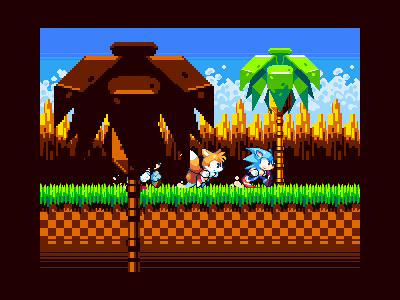
“All Aboard the Sonic Train”
The first project that I will draw inspiration from is “All Aboard the Sonic Train” by Phil Giarrusso. Phil Giarrusso is a designer, illustrator, and animator specializing in pixel art and game development. Inspired by a beloved childhood video game, Sonic the Hedgehog, Phil Giarruso recreates a scene from the game through motion graphics using a pixeled aesthetic. Because my project will involve a character running and jumping across a moving landscape, I was inspired by the aesthetic of this project. In addition, I enjoyed the colorful, bright colors in this gif, and I plan on drawing inspiration form this color palette and using it in my project.
Click here to view more of Giarrusso’s work
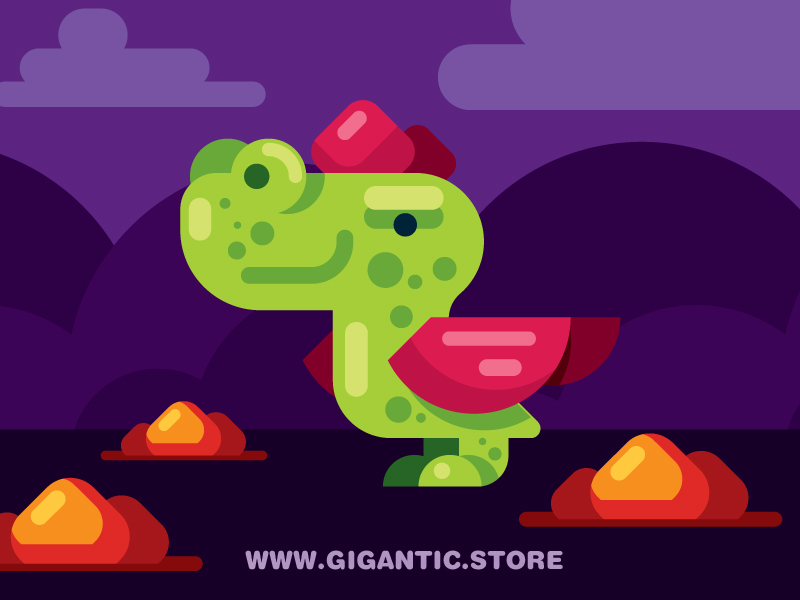
“Flat Design Dragon for Games”
The second project that I will draw inspiration from is “Flat Design Dragon for Games” by a design company called “Gigantic” which specializes in flat design illustration and 2D animation. Similar to the project above, I was inspired by not only the color palette and gameplay aesthetic, but I liked the usage of various layers within the piece. I plan on incorporating various layers and colors in order to create depth in my project.
Click here to view more of Gigantic’s work
Eliza Pratt – Looking Outwards 12
For my final project, I’ve drawn inspiration from a handful of game designers that create intuitive, aesthetically pleasing games for web and mobile platforms.
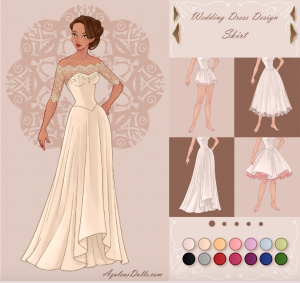
Since I plan on creating an interactive dress up game, I’ve paid particular attention to the game developer Azalea, an artist known for creating almost a hundred fashion games for girls. She first draws the figures, clothing and backgrounds on Photoshop and then programs the interactive elements in actionscript 3 using Adobe Flash. Not only is Azalea known for maintaining her own site of exclusive games, but she’s gained attention for her unique artistic style and clean, intuitive designs. Since online games that are developed for children often use excessive decals and loud visuals, I admire Azalea’s distinct artistic expression and attention to usability.
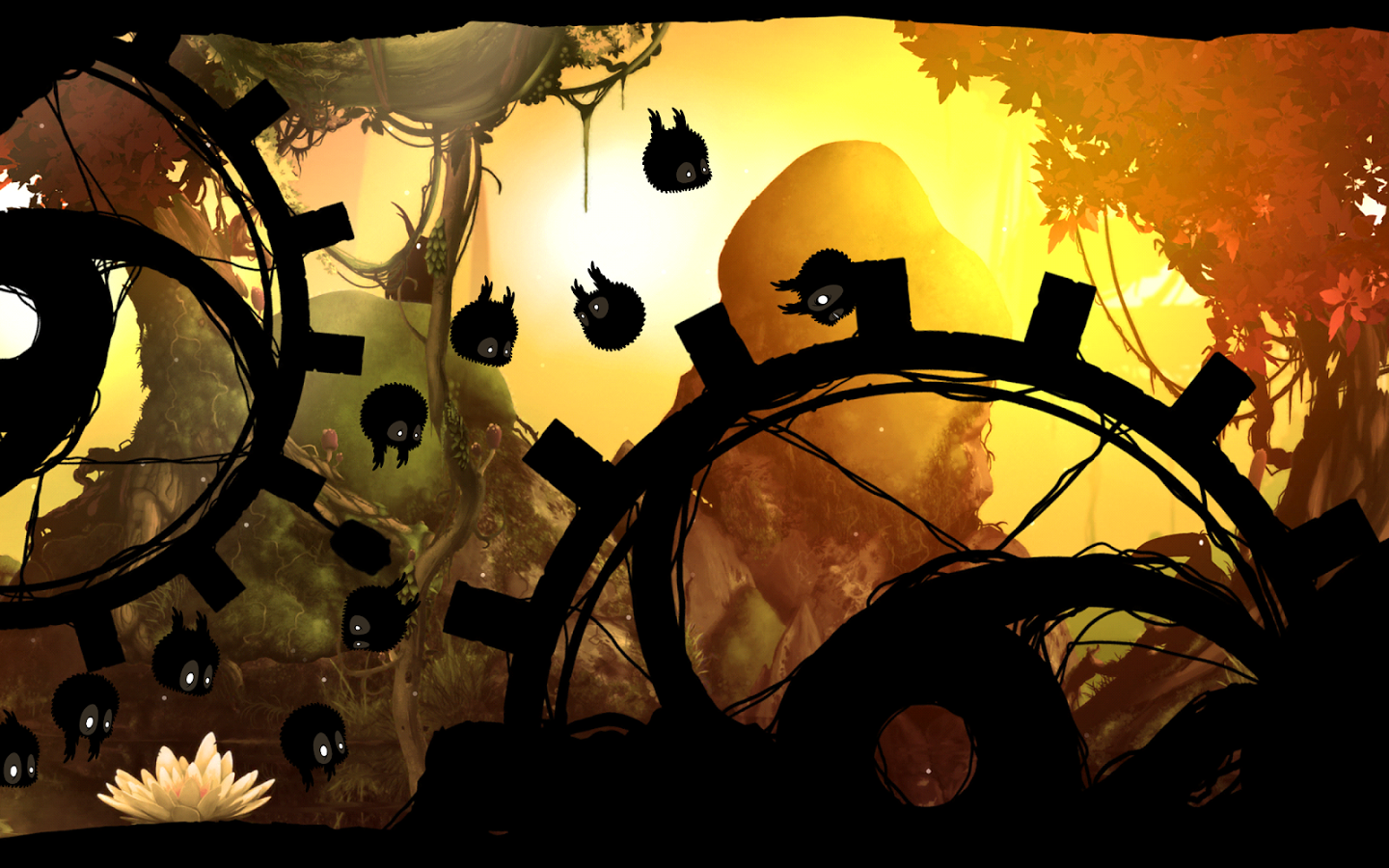
While researching games with strong creative voices, I also drew inspiration from Badland, a mobile game developed by Frogmind. Following its release in 2013, Badland has received considerable attention for its captivating visuals, simple controls, and adventurous narrative.
I admire developers such as Azalea and Frogmind for their ability to combine beautiful visuals, strong user interfaces, and programming to create games for the public. While I’m developing my own game for this project, I hope to draw inspiration from these successful elements in my own design.
Jenny Hu — Looking Outwards 12
In looking for inspiration for my final project, which will be some form of an audio sequencer (tagged with visual animations)— I’ll write here about three projects I’ve found that range from simple to more difficult and experimental.
- The first project is Yamaha beats, by artist Louie Zong. Louie is a board artist for Cartoon Network’s We Bare Bears, but also maintains a really strong set of work online— including music production, illustration, and games. His project Yamaha Beats is a simple sequencer made from Unity— where you can make music using the sounds of koroks, from ghibli. I like the simplicity, and hope I can make something at the very least like this, that is well crafted and beautifully made.
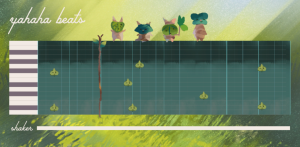
screenshot from Louie Zong’s sequencer game yamaha beats - The second project is Google’s Doodle for Oskar Fischinger’s 117th birthday. The project is pretty remarkable for all the nuances the program gives you— changing instruments, layering sequences, and crafting complex animation just to name a few. What I love is the little things the program adds in— like the fact I can click and drag, and the fade in and out of the actual sequence tool, which lets you appreciate the animations more.
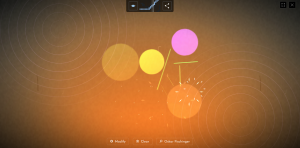
screenshot from the google doodle - Finally, the third project, which is both audio + visual, but also physical. Golan Levin’s project Scrapple is an audio-visual sequencer that uses everyday objects as the markers for the musical composition. By placing things on a table, and having a projection, visitors can more physically reflect and be active in space— composing music in a different way.
I think it’s also important to note the really contrasting audio and visual tones/aesthetics here. Professor Golan’s leans heavier into electronic beats, Google’s leans into traditional instruments and analog animations (like Oskars’), and Louie’s uses non-traditional instrument sounds to feel more like a forest. I’ll have to do a lot of thinking towards how I want mine to come out!
Emily Zhou –– Final Project Proposal
My plan for the final project is to create an interactive software that guides the user through the timeline of humanity’s exploration of the moon.
The canvas would start with a white circle that represents the moon and smaller circles surrounding it that represent stars. Each of the stars serves as a milestone in moon exploration. I plan to include 20-25 events from a source at space.com.
When the user clicks a star, the year and description text of the first event will appear to the right. Some amount of random chords will also appear on the moon. When the user clicks another star, the first star will be connected by a line, the second event will be displayed, and more chords will randomly appear on the moon. At the end of the timeline, the moon will appear grey and spherical as a result of overlapping chords and all the stars will be connected.
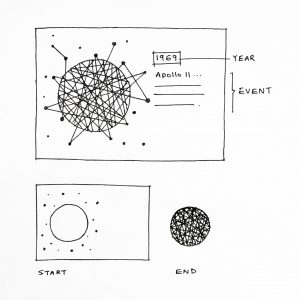
Eunice Choe – Looking Outwards-12
Rise and Fall from Design I/O on Vimeo.
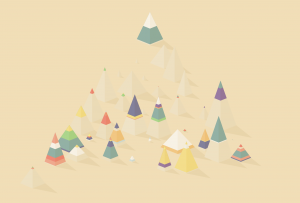

The two projects I am comparing are Basecamp (2014) by Leander Herzog and Rise and Fall (2010) by Design I/O. Basecamp by Leander Herzog is an interactive animation of colorful pyramids made with D3.js. The animation is interactive because it changes color every time the user clicks on the screen. I admire the simplistic and colorful aspects of the animation and how it responds to the user through the color changes. For my final project, I want to create interactive, animated landscapes, so this project gives me a reference of how I can show depth and layering in my composition. Because the animation is simple, it lacks a narrative, which is more prevalent in the other project Rise and Fall by Design I/O. Rise and Fall is an interactive magazine cover made with openFrameworks. By rotating the magazine, the user goes through a journey in which they interact with surreal creatures and environments that switch back and forth from water to sky. I admire that this project allows the user to control their own paths and stories. I also admire how the animations respond to gravity and physics, which adds a sense of realism and complexity.
![[OLD FALL 2018] 15-104 • Introduction to Computing for Creative Practice](../../../../wp-content/uploads/2020/08/stop-banner.png)
